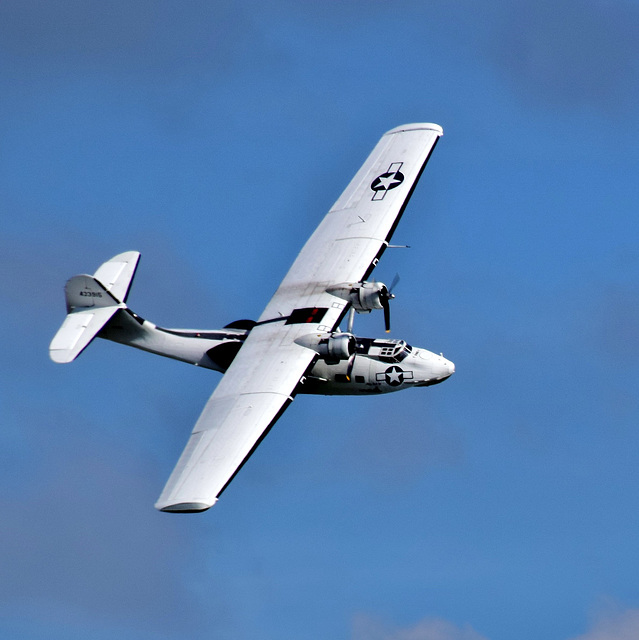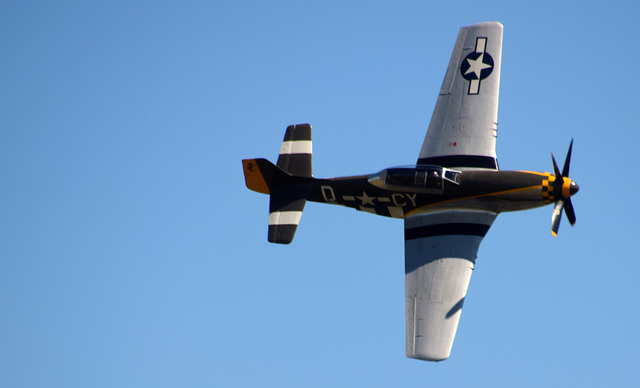
Private
24 Aug 2014
8 favorites
4 comments
St Marys Church, Chilham Kent
The church of St Mary, Chilham, was mentioned in the Domesday Book of 1086, but has a history going back perhaps as far as the 7th century. In the 12th century the church was owned by the French abbey of St Bertin, a Benedictine monastery at St Omer. It later passed into the hands of Syon Abbey, based at Isleworth in Middlesex.
The striking tower reaches 68 feet in height, affording far-reaching views. On a clear day the towers of Canterbury Cathedral can be seen.
Not clear when I visited!!!
MY THANKS TO ALL WHO VISIT AND COMMENT IT IS APPRECIATED
Japanese Anemone
This delicate-looking perennial is a reliable late-summer to mid-Autumn bloomer, producing masses of dainty white to pink to rose blooms rising above attractively lobed medium green foliage. Flowers may be single, double, or semi-double. Seen in someone's garden
MY THANKS TO ALL WHO VISIT & COMMENT IT IS APPRECIATED
29 Sep 2009
12 favorites
6 comments
DAHLIA
A photo I took a little while ago at RHS Garden Wisley, Surrey,
It was in the experimental part of the garden.
MY THANKS TO ALL WHO VISIT AND COMMENT IT IS APPRECIATED
27 May 2017
9 favorites
4 comments
Spifire MK 1a
This aeroplane is based at Duxford Airfield, previously at the Biggin Hill Heritage Hanger, Biggin Hill, Kent. It wears the authentic markings X4650 / KL-A from 54 Squadron, which it wore when with the Squadron in 1940.
Spitfire X4650 was built to contract 19713/39 by Vickers Armstrong's (Supermarine) Ltd. at Woolston and first test flown on 23rd October 1940. It was delivered to the RAF on 25th October and into the hands of 24 MU at Ternhill. On 14th November 1940 it was taken on charge by 54 Squadron at Catterick, as a result of the crash on 28th December 1940 the aeroplane was damaged and it was struck off charge on 4th January 1941.
Seen here taxiing past other aircraft to take off for the Duxford air display. Duxford is now part of the Imperial War Museum.
MY THANKS TO ALL WHO VISIT AND COMMENT IT IS APPRECIATED.
27 May 2017
9 favorites
4 comments
PBY-5A Catalina "Miss Pick Up"
Seen flying above the imperial war musem Duxford airfield.
PBY Catalina was an American and Canadian-built flying boat of the 1930s and 1940s. PB stands for Patrol Bomber, with Y being Consolidated Aircraft’s manufacturer identification. It could be equipped with depth charges, bombs, torpedoes, and .50 calibre machine guns and was one of the most widely used multi-role aircraft of World War II. The PBY Catalina was the most successful flying boat ever produced. First flown in March 1935, they were in production for over ten years and were designed and built by the American aircraft manufacturers, Consolidated Aircraft of San Diego, California. The Catalina in RAAF service, despite its vulnerability due to lack of speed, was a front line aircraft effectively taking the fight to the Japanese through its long distance mine laying flights.
The PBY was the first US aircraft to carry radar and fulfilled diverse missions including torpedo-bomber, transport and glider tug. Famous were the "Black Cat" Catalina’s which, painted matt black, roamed the western Pacific from December 1942 finding Japanese ships by radar at night and picking Allied survivors from ships and aircraft in boats and dinghies. RAAF Catalina’s were famous for their precision laying of mines in enemy water ways and harbours. In this role it performed a substantial contribution towards victory for the Allies in the Pacific War by blockading essential oil ports and closing the "back streets" to Japan.
About 3300 Catalinas were produced and several are still flying today as water bombers, flying geological surveys, carrying people, supplies and equipment to inaccessible areas and even flying sportsmen into remote areas for hunting and fishing.
The aircraft is powered by two Pratt & Whitney R-1830-92 Engines
Twin-row 14 cylinder Air-cooled Radials, 1,200 hp @ 2,700 rpm.
MY THANKS TO ALL WHO VISIT AND COMMENT IT IS APPRECIATED
27 May 2017
7 favorites
Mustang P-51D
Built too late to see combat service in World War Two, P-51D 44-84847 was one of the last Mustangs constructed at North American Aviation’s Dallas, Texas, plant. Details of her post war service career are limited, but there is photographic evidence, from September 1951, of her serving with the 45th Tactical Reconnaissance Squadronat Kimpo, South Korea, during the Korean War.
By late 1951 the 45th TRS were replacing their aging Mustangs with RF-80 Shooting Star jets, and so 44-84847 was shipped back the US to serve with the Air National Guard until around 1956. Around this time she slips off the radar until January 1999 when she re-appears in North Dakota as a restoration project. The airframe joined The Fighter Collection fleet the following year and was moved to Chino, California for a full restoration with the decision made to modify her to two-seat TF-51D configuration.
The restoration culminated in a first flight in May 2007 with Steve Hinton at the controls. Following this our Mustang was painted in the 55th Fighter Group scheme of Capt Frank Birtciel’s P-51D 44-14561, Miss Velma. Following the successful completion of her flight testing, Miss Velma was fitted with external drop tanks and flew across the Atlantic to the UK, where she arrived at Duxford on the 4th July 2007.
I understand that at the Duxford air show on July 9th 2017 this aeroplane had engine failure when coming into land and the pilot was forced to land wheels up in a field alongside Duxford, the pilot is ok but I can find no reports on the aeroplane.
Pictured at Duxford May 27 2017.
My Thanks To All Who Visit and Comment.
27 May 2017
4 favorites
1 comment
Flying Fortress & Mustang at Duxford
Sally B
Built as a Boeing B-17G-105-VE c/n 8693, the future Sally B was one of the last to be constructed by the Lockheed-Vega plant at Burbank, California. Accepted by the United States Army Air Force (USAAF) as 44-85784 on June 19 1945 it was too late to see war service, and was flown to Nashville for modifications. Converted for training purposes and re-designated TB-17G, it was based at Wright Field (now Wright-Patterson AFB), Ohio from November that year.
Continuing in the care of 2750th Air Base Group (ABG), ‘784 was selected for use as a research vehicle and in 1949 allocated EB-17G status. As such the B-17 was used in a variety of research roles, one of the most bizarre being the addition of a man-carrying pod on the starboard wingtip. Also fitted at the time was an infra-red tracking device in place of the Perspex nose. These trials continued for some years in a variety of guises and it was not until 1954 that ‘784 was returned to standard configuration, less armaments, at Hill AFB in Utah. No details have emerged of the trials which this aircraft was involved in.
In France the Institut Geographic National (IGN) had purchased several B-17s after the war for survey and mapping work, and added others as necessary; ‘784 arrived in November 1954 and was given the French registration F-BGSR. Based at Creil, these aircraft carried out work for the French government, and others, faithfully for many years. As they entered the 1970s it was apparent that the cost of operating the Flying Fortresses was getting prohibitive, also spares were becoming something of a problem. The IGN replaced the B-17s with other aircraft, including the purpose-built Hurel-Dubois HD.34.
Businessman and pilot, Ted White brought F-BGSR to Britain via Biggin Hill to the Imperial War Museum Duxford, as N17TE, in March 1975, to begin a new life as Sally B, named after Ted’s long-time companion Elly Sallingboe. Sally B made her debut at the 1975 Biggin Hill Air Fair, flying as the USAAF World War Two Memorial Flight. The struggle to operate Sally B successfully in this important role had begun.
In order to operate the aircraft successfully, an engineering support group was set up and many volunteered their help to work on the aircraft. A permanent operating base was set up at Duxford, which, at that time, was an up and coming centre for aircraft preservation operated by the Imperial War Museum. Kept in flying condition by volunteers from the newly formed Duxford Aviation Society, the Fortress was painted in the 457th Bomb Group, USAAF 8th Air Force, based at Glatton during the Second World War, but retaining her original serial number 485784.
Sally B continued to be flown at displays as a memorial to the 79,000 US airmen who died fighting in the skies over Europe between 1942 and 1945. In October 1979, a distinguished audience assembled at Duxford to see Colonel John Vanden Heuvel DSC unveil a plaque fitted in Sally B’s radio room, dedicated to the fallen airmen, thus putting an official seal of approval upon the aircraft’s role as a flying memorial. No silent, cold memorial this, but a living tribute to the dead, borne aloft with the thunder or engines into the sky that they knew and loved and in which they fought and died.
Seen with her little friend The P-51D Mustang,
Built too late to see combat service in World War Two, P-51D 44-84847 was one of the last Mustangs constructed at North American Aviation’s Dallas, Texas, plant. Details of her post war service career are limited, but there is photographic evidence, from September 1951, of her serving with the 45th Tactical Reconnaissance Squadron at Kimpo, South Korea, during the Korean War.
By late 1951 the 45th TRS were replacing their aging Mustangs with RF-80 Shooting Star jets, and so 44-84847 was shipped back the US to serve with the Air National Guard until around 1956. Around this time she slips off the radar until January 1999 when she re-appears in North Dakota as a restoration project. The airframe joined The Fighter Collection fleet the following year and was moved to Chino, California for a full restoration with the decision made to modify her to two-seat TF-51D configuration.
The restoration culminated in a first flight in May 2007 with Steve Hinton at the controls. Following this our Mustang was painted in the 55th Fighter Group scheme of Capt Frank Birtciel’s P-51D 44-14561, Miss Velma. Following the successful completion of her flight testing, Miss Velma was fitted with external drop tanks and flew across the Atlantic to the UK, where she arrived at Duxford on the 4th July 2007.
MY THANKS TO ALL WHO VISIT AND COMMENT IT IS APPRECIATED.
27 May 2017
7 favorites
Bronco OV-10B at Duxford
The North American Rockwell OV-10 Bronco is an American turboprop light attack and observation aircraft. It was developed in the 1960s as a special aircraft for counter-insurgency (COIN) combat, and one of its primary missions was as a forward air control (FAC) aircraft. It can carry up to three tons of external munitions, internal loads such as paratroopers or stretchers, and can loiter for three or more hours.
This one is the OV-10B and is operated by The Bronco Demo Team,
OV-10 will be bringing Poppies from Flanders Fields to venues and air shows all over Europe in 2017; supporting a message of peace and reconciliation in remembrance of the sacrifice by so many 100 years ago. The Bronco Demo Team is based at Kortrijk-Wevelgem airport situated just 12 nm east from the Ypres salient. The airfield was first used during World War I, initially by German fighter squadrons and later, during the advance of the Allied Powers leading to the end of the conflict, by the Royal Air Force. As a commemoration of The Great War, the Bronco Demo Team has adorned their OV-10 Bronco in a truly amazing new “Poppy” livery. The Poppies and “LEST WE FORGET, 1914-18” graphics reflect light differently when the aircraft moves, producing a different shine and brightness at various angles. The effect is outright awesome and very unique!
The OV-10 Bronco will carry actual Poppy seeds to venues and air shows in 2017, underlining the theme. The seed packets will be offered for sale at the shows, with each bag individually marked with flight date and show name. A portion of the proceeds will be donated to charity.
Not my best effort but I had just arrived and taken the camera out of the bag!!
Last post played differently
www.youtube.com/watch?v=kqcSWOYUE-Q
MY THANKS TO ALL WHO VISIT AND COMMENT IT IS APPRECIATED
Jump to top
RSS feed- Latest items - Subscribe to the latest items added to this album
- ipernity © 2007-2024
- Help & Contact
|
Club news
|
About ipernity
|
History |
ipernity Club & Prices |
Guide of good conduct
Donate | Group guidelines | Privacy policy | Terms of use | Statutes | In memoria -
Facebook
Twitter









